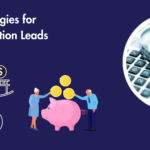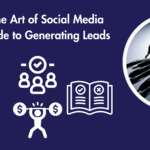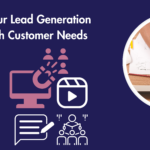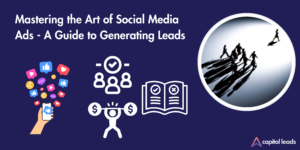
Trying to get leads can feel like finding your way through a tricky puzzle. The online world has lots of great ways to connect with people, but there are also easy mistakes to make.
It’s important to know these mistakes so you can connect well with potential customers. Let’s delve into the most frequent missteps and how you can steer clear of them
Not Knowing Your Audience
When you start trying to get leads, it’s key to know who you’re talking to. Because if you don’t know your audience, it’s like planning a party without knowing who the guests are; you could end up playing jazz music to a group of rock enthusiasts.
Without a clear picture of your target audience, your messages might fall flat or even turn potential customers away.
For example, if you’re selling skateboards, advertising to older people who like golf might waste time and money.
Instead, your message should resonate with younger individuals who have a passion for skating or are looking to pick up the sport.
Fix:
To avoid this misstep, spend time researching and defining your audience. Start by creating customer personas – these are fictional representations of your ideal customers. Consider factors like age, interests, income level, challenges, and goals.
For the skateboard example, think of “Tom”, a 16-year-old student who likes being outside and follows what his friends like.
By understanding Tom’s motivations and pain points, you can tailor your message to appeal directly to him.
Surveys, feedback, and social media can help you understand what your audience likes. Tools like Google Analytics show who visits your website. Giving you the ballpark of what your next tactic should be.
With this information, you can make plans that really connect with the people you want to talk to.
Poor Product-Market Fit
If your product doesn’t fit what people want, it’s like putting a square peg in a round hole. Even with a great product, you might find it hard to get sales and interest.
For example, introducing an advanced, pricey smartwatch in an area where people prefer basic, affordable watches might not get the anticipated response.
Fix:
Start by re-evaluating your product. What makes it unique, and which problems does it fix? Then, dig into market research.
Understand the preferences and behaviors of your audience. Are they truly the best fit for what you offer?
If there’s a mismatch, consider tweaking your product to better suit the market’s needs. But if that’s not possible, think about targeting a different audience segment.
For instance, the smartwatch might be more appealing to tech enthusiasts in urban settings.
Finding the right product fit means the interest from customers validates that your product satisfies a need or solves a problem.
Buying Email Lists or Not Generating Leads Organically
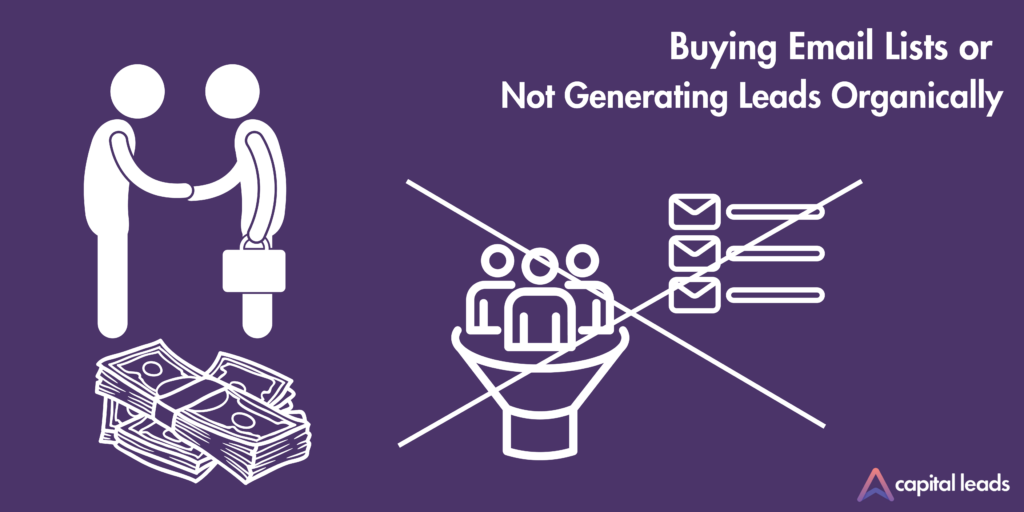
Purchasing email lists might seem like a quick way to reach many potential customers. However, this shortcut is a BIG NO.
Purchasing an email list for lead generation can be tempting, but it’s fraught with pitfalls. Many of these lists lack consent, meaning you’re reaching out to people unfamiliar with your brand, leading to low engagement and conversion rates.
Sending unsolicited emails can even land you in hot water legally, with regulations like GDPR and the CAN-SPAM Act penalizing it.
Fix:
Shift your focus to organic lead generation. Organic leads have shown interest, making them more likely to engage and convert.
To attract these leads:
Content Creation
Produce valuable content like blogs, videos, or e-books that cater to your audience’s needs.
Landing Pages
Make simple, easy-to-use landing pages with clear prompts to get people to subscribe or buy.
Social Media Engagement
Post regularly, share useful content, and interact with your audience on relevant platforms.
Referral Programs
Motivate happy customers to refer others, amplifying organic growth.
SEO
Optimize your content to rank well in search results, increasing visibility to potential leads.
Prioritizing organic methods builds genuine relationships and establishes long-term trust in your brand. It’s more sustainable and yields better results than quick-fix solutions.
Writing Ineffective Blog Posts
Blogging can be a powerful tool for lead generation, but not all blog posts are created equal. Writing ineffective or weak blog posts means producing content that doesn’t resonate with your audience, doesn’t answer their questions, or lacks depth and value.
Such content can quickly deter visitors from returning to your website or considering your products or services.
Ineffective posts can also hamper your site’s SEO, making it harder for potential leads to discover you online. Simply put, if your content isn’t addressing the needs or interests of your audience, it’s missing the mark.
Fix:
To turn your blog into a lead generation powerhouse, consider the following strategies:
Understand Your Audience
Before typing the first word, know who you’re writing for. What are their pain points, questions, or interests? Use tools like Google Analytics or conduct surveys to gather insights.
Focus on Quality Over Quantity
It’s better to publish one well-researched, comprehensive post per month than several shallow ones. Depth and value often lead to higher engagement and shares.
Include Strong CTAs
Every blog post should show readers what to do next, like reading another post, joining a newsletter, or looking at a product.
Optimize for SEO
Research relevant keywords and naturally integrate them into your content. This helps improve visibility on search engines.
Engage with Your Readers
Encourage comments, reply to feedback, and foster a community around your blog. This not only boosts engagement but also provides insights into what your audience wants to see next.
Update Old Content
Trends and information change. Periodically review and update your older blog posts to ensure they remain relevant and accurate.
By focusing on value and relevance, your blog can become a trusted resource, attracting and retaining potential leads. Remember, the goal isn’t just to get readers, but to convert those readers into loyal customers.
Not Offering Lead-Gen Content for Different Stages of the Buyer’s Journey
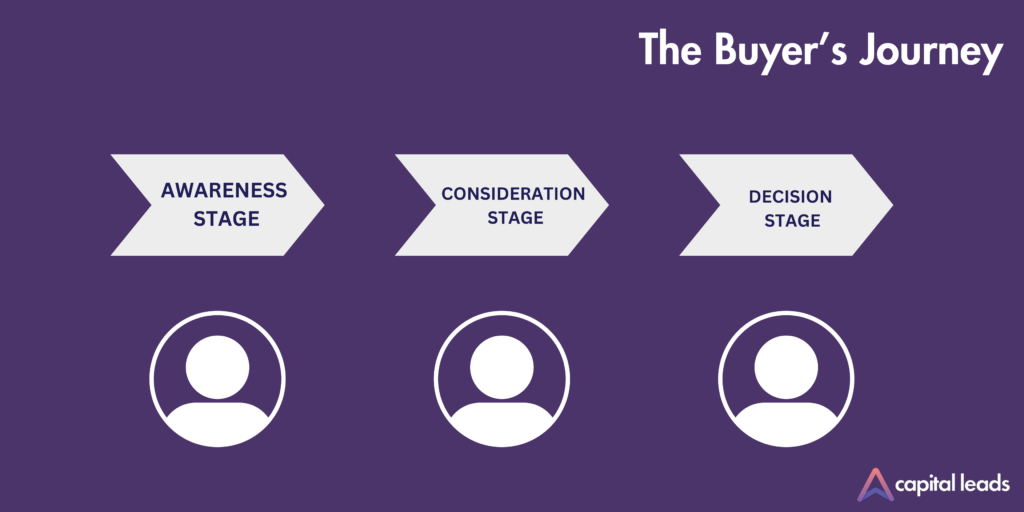
Every buyer goes through stages from recognizing a need to making a purchase. If your content focuses only on one stage, you risk missing potential leads elsewhere in their journey.
For example, a beginner’s guide might not appeal to someone nearly ready to buy.
Fix:
To capture leads at every stage.
Awareness Stage
People are identifying their needs. Offer educational content like blog posts or videos on general industry topics.
Consideration Stage
Leads are seeking solutions. Share deeper insights like webinars, case studies, or comparison charts to highlight how you can help.
Decision Stage
Leads are choosing a solution. Provide content like product demos, testimonials, or detailed guides to support their decision.
Segmentation
Sort your leads by where they are in their journey and give them content that matches their current needs.
Gather Feedback
Regularly collect feedback to refine your strategy, ensuring it meets evolving audience needs.
Update Content
As market trends shift, so might the buyer’s journey. Adjust your content to reflect these changes.
By giving the right info at each step, you can connect with more people and make your brand seem trustworthy and helpful.
Not Using Lead Generation Tools
In the digital age, relying solely on traditional methods for lead generation can put you at a disadvantage. Lead generation tools are designed to automate, optimize, and enhance the process, helping businesses identify, attract, and nurture potential clients more effectively.
Without leveraging these tools, businesses can miss out on valuable insights, waste time on manual processes, and lose potential leads to competitors who are using technology to their advantage.
Fix
To enhance your lead generation efforts, consider the following approaches:
CRM Systems
Tools like Salesforce or HubSpot help keep track of potential and current customers. They save important info, keep track of chats, and help turn leads into sales.
Email Marketing Platforms
Tools like Mailchimp or ConvertKit allow you to create, automate, and track email campaigns. They can categorize your audience, tailor content, and measure your outreach success.
Landing Page Builders
Platforms like Unbounce or Leadpages help make effective landing pages that boost conversions.They offer A/B testing features, analytics, and integrations with other marketing tools.
Lead Scoring Tools
These help prioritize leads based on their likelihood to convert. By identifying high-value prospects, you can focus your efforts more effectively.
Social Media Ad Tools
Tools like Facebook’s Ad Manager let you show ads to the people most likely to want what you’re selling.
Analytics and Tracking
Tools like Google Analytics show website traffic, user actions, and conversion routes, helping improve strategies with real data.
Chatbots and Live Chat
These tools quickly help visitors by answering their questions, showing them the right stuff, or keeping their info for later.
Keep in mind, that it’s important to pick tools that match what you need and want to achieve.
Always check and change the tools you’re using to make sure they keep helping as your plans grow or change.
Failing to Nurture Leads
Acquiring a lead is just the beginning of the relationship. Many businesses make the mistake of not nurturing these leads, focusing solely on the initial acquisition.
A lead might show interest in your product or service but isn’t always ready to buy immediately. If left unattended, they might drift away, forget about your offering, or be swayed by competitors.
Simply put, neglecting to nurture leads means missing out on potential conversions and sales.
Fix
To ensure your leads move smoothly through the sales funnel, consider these nurturing strategies:
Consistent Communication
Regularly send informative emails or newsletters that provide value. This keeps your brand at the top of their mind without being overly pushy.
Segmentation
Not all leads are the same. Segment your leads based on behavior, preferences, or where they are in the buying journey, and tailor content accordingly.
Engaging Content
Offer a mix of content like articles, videos, webinars, and more that addresses the needs and concerns of your leads. This not only educates them but also reinforces the value of your solution.
Feedback Loop
Listen to your leads. Use surveys or direct communication to understand their reservations or concerns and address them promptly.
Personalization
Use the data you have to personalize your interactions. Personalized emails, for instance, have a higher engagement rate than generic ones.
Automated Follow-ups
Use marketing automation tools to send timely follow-up messages based on user actions, ensuring no lead goes unattended.
Build Trust
Offer testimonials, case studies, and reviews to reassure leads about the quality of your product or service. Building trust can significantly improve conversion rates.
Special Offers
Every so often, incentivize leads with discounts, trials, or bonuses, making it more enticing for them to make a purchase.
By nurturing leads, you’re building a relationship. It’s about understanding their needs, offering value, and guiding them to the point where they’re ready to make a decision.
When done right, lead nurturing can significantly increase your conversion rates, turning interested individuals into loyal customers.
Copying of Competitors
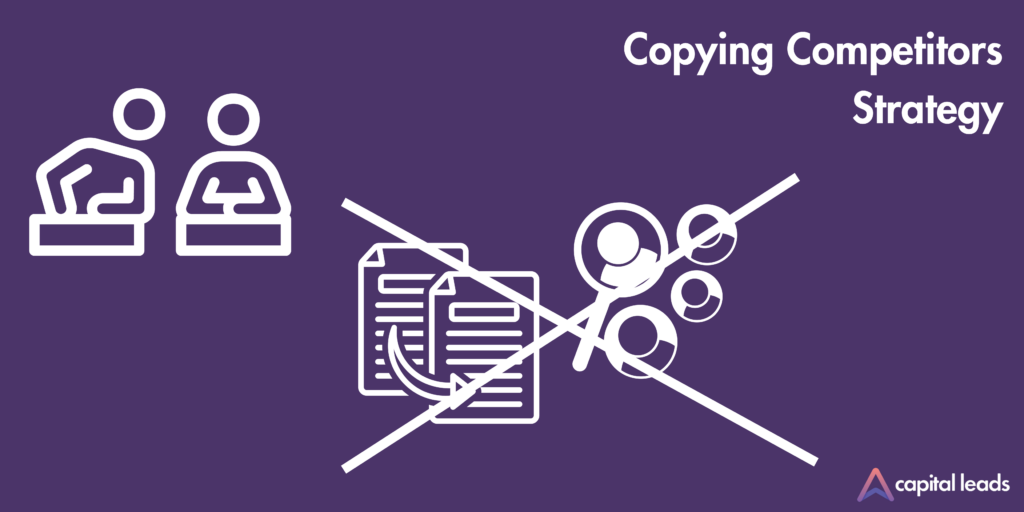
While observing competitors is smart, directly mimicking their strategies without understanding them can lead to poor results.
Each business has unique attributes, and what succeeds for one might not for another. Blindly following competitors can waste resources and fail to capitalize on your unique strengths.
Fix
Know Your Strengths
Recognize what makes your business unique. Highlight and build strategies around these attributes.
Research Before Adopting
Understand the ins and outs of any strategy before diving in. Consider if it aligns with your business goals.
Small-Scale Testing
Before fully embracing a strategy, test it on a limited scale. Measure results to determine its broader applicability.
Engage with Your Audience
Understand their needs and preferences through direct communication. This can guide your strategies more effectively than just aping competitors.
Stay Informed
While copying isn’t advised, being aware of industry trends is essential. Adapt general industry knowledge to your context.
Prioritize Innovation
Set your brand apart by trying fresh approaches instead of just following established norms.
Regularly Review Strategies
Constantly assess and refine your tactics based on performance data.
While competitors can offer insights, it’s vital to mold strategies that fit your brand’s unique identity and resonate with your audience.
Not Using Social Media Strategically for Lead Generation
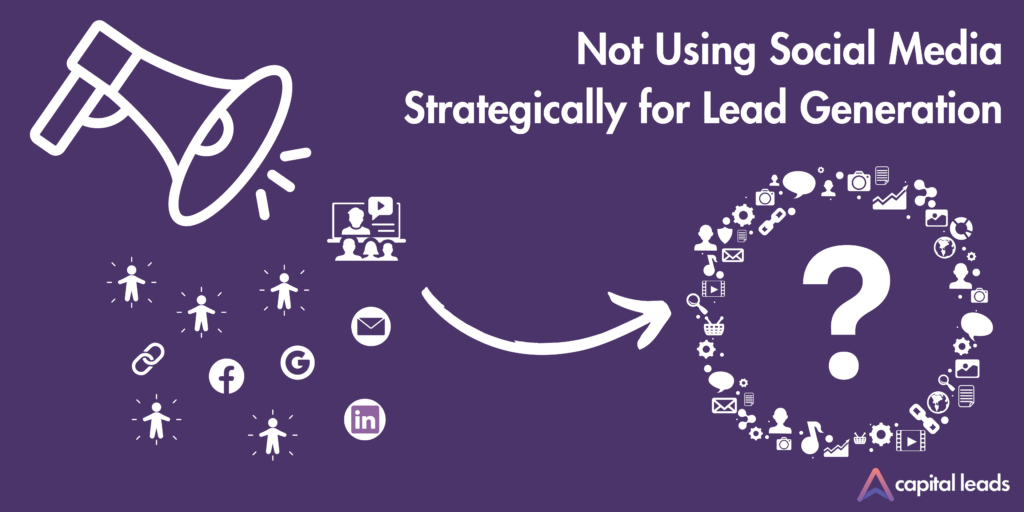
In today’s digital age, social media isn’t just a platform for sharing personal moments; it’s a powerful tool for businesses. However, many companies miss the mark by not using social media strategically for lead generation.
Simply having a presence isn’t enough. Without a well-thought-out strategy, businesses can miss out on a vast pool of potential customers, waste resources on ineffective campaigns, and fail to engage their audience meaningfully.
Fix
To harness the full potential of social media for lead generation, consider these approaches:
Platform Selection
Not all social media platforms are created equal. Understand where your target audience spends their time. For instance, B2B companies might find more success on LinkedIn, while B2C brands could thrive on Instagram or TikTok.
Engaging Content
Don’t just promote products or services. Share valuable content like tutorials, behind-the-scenes looks, testimonials, or industry insights to engage your audience.
Use Ads Strategically
Platforms like Facebook and Instagram offer powerful ad targeting features. Create tailored ads based on demographics, interests, and behaviors to reach potential leads.
Leverage Stories & Features
Use platform-specific features, like Instagram Stories or LinkedIn polls, to engage your audience and gather insights.
Social Listening
Monitor mentions of your brand, products, or industry terms. This can provide insights into your audience’s needs and perceptions, allowing you to engage proactively.
Optimize Profiles
Ensure that your social media profiles are complete with a clear description, contact information, and a call-to-action. A well-optimized profile can drive organic leads.
Collaborate and Partner
Team up with influencers or brands that align with your values and target audience to expand your reach.
Track & Analyze
Use analytics tools to measure the effectiveness of your campaigns. Understand which content performs best, when your audience is most active, and refine your strategy accordingly.
Engage Regularly
Social media is a two-way street. Respond to comments, answer queries, and engage with your followers to build trust and foster relationships.
Social media, when used strategically, can be a goldmine for lead generation. By understanding your audience, delivering valuable content, and actively engaging, you can transform casual followers into potential customers and, eventually, loyal advocates for your brand.
Wrong Lead Generation Form Length
Lead generation forms are crucial touchpoints between a business and its potential customers. However, the length of these forms can significantly impact conversion rates.
If a form is too long and tedious, users might abandon it, feeling overwhelmed or wary of sharing too much information. If it’s too short, you might not gather enough essential details to qualify and engage with the leads effectively.
Fix
To strike the right balance with your lead generation forms, consider these strategies:
Determine Purpose
Understand the primary goal of your form. If it’s a simple newsletter signup, a name and email might suffice. But if it’s for a detailed consultation or a product trial, more information may be necessary.
Prioritize Essential Fields
Only ask for the most crucial information upfront. Too many fields can deter potential leads. Remember, you can always gather more details during subsequent interactions.
Use Progressive Profiling
Tools like HubSpot offer progressive profiling, where return visitors are presented with new form fields each time they engage, gradually collecting more information without overwhelming them all at once.
Test and Refine
A/B testing can be invaluable. Create multiple versions of your form with varying lengths and field types to see which one converts best.
Assure Privacy
With increasing concerns over data privacy, ensure you include a brief privacy statement or link to your privacy policy. Assuring users that their information is safe can boost form completion rates.
Mobile Optimization
Many users access forms via mobile devices. Ensure your form is mobile-friendly, with easy-to-tap fields and clear call-to-actions.
Feedback Loop
After submission, provide users with a confirmation message or feedback. It assures them that their action was successful and sets the expectation for the next steps.
Analyze Drop-offs
Use analytics tools to identify where users might be abandoning the form. If a particular field has a high drop-off rate, consider its necessity or rephrase it to be clearer.
The ideal lead generation form length varies depending on the context and audience. Keep checking and changing your forms based on feedback and numbers to make sure they keep bringing in good leads for your business.
How to improve lead generation
These tips can help you improve lead generation:
Work with Sales
Collaborate with your sales team to make sure no lead is missed.
Unified Brand Voice
Use the same message across different channels to help people recognize and trust your brand.
Make CTAs specific
Be clear about what you’re offering in the CTA, whether that’s a downloadable guide, a free webinar, a free trial, or an invitation to fill out a form.
Keep your CTAs stand out with colors, images, and hyperlinks.
To sum up, avoiding mistakes in lead generation can really help your business connect with more potential customers. The online world offers many chances to grow, but it also has challenges.
By watching out for these common errors and always looking for ways to improve, you can get better at finding and keeping new customers.




